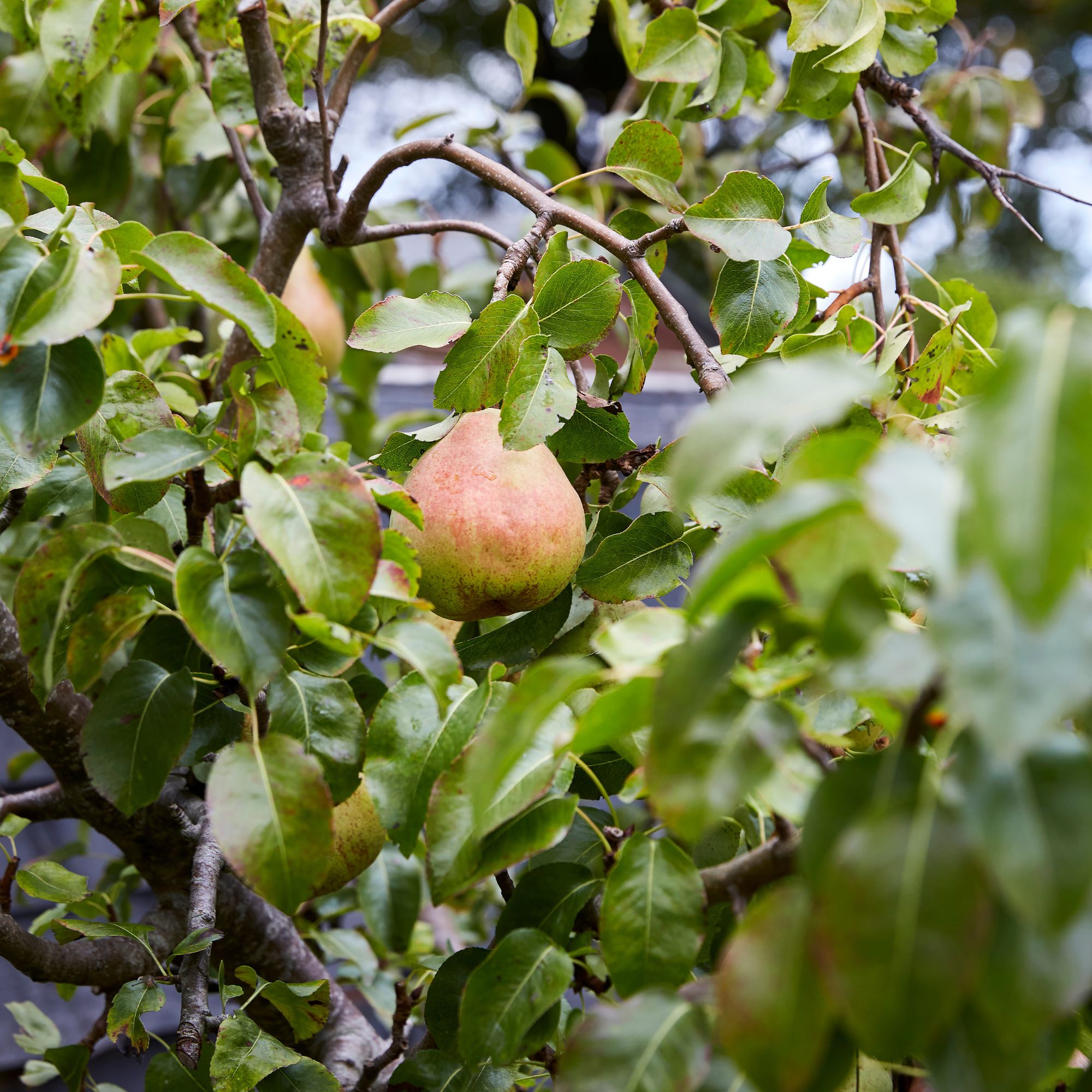
Knowing how to prune a pear tree is essential as December approaches. The colder weather is the perfect time to shape your plant, ensure that it's healthy before the spring growth starts and encourage a bountiful harvest come autumn.
Pears are one of the easiest fruit trees to grow but it is still important that you know how to prune a pear tree to keep it healthy and productive. Knowing where to cut and at what angle is essential when maintaining your prune trees for a better harvest.
Learning how to prune this plant, as well as best time to prune a pear tree, is essential if you're trying to grow your own.
Best way to prune a pear tree
'Make your cuts just above a bud or side shoot, being careful not to damage it. This helps the tree direct its energy into new growth. Cutting at a slight angle, around 45 degrees, sloping away from the bud, allows water to run off the cut, reducing the risk of rot or disease. Avoid cutting too close to the bud, as this can harm it and slow down growth,' says Glen Peskett from Saxton Blades
'For larger branches, cut them in sections to reduce strain on the tree. Start with a small cut underneath the branch to prevent the bark from tearing when the branch is removed. Then make a second cut on top of the branch further from the trunk, and finish with a clean cut close to the main trunk. These cuts are important as they reduce the risk of leaving a stub that can create diseases.'
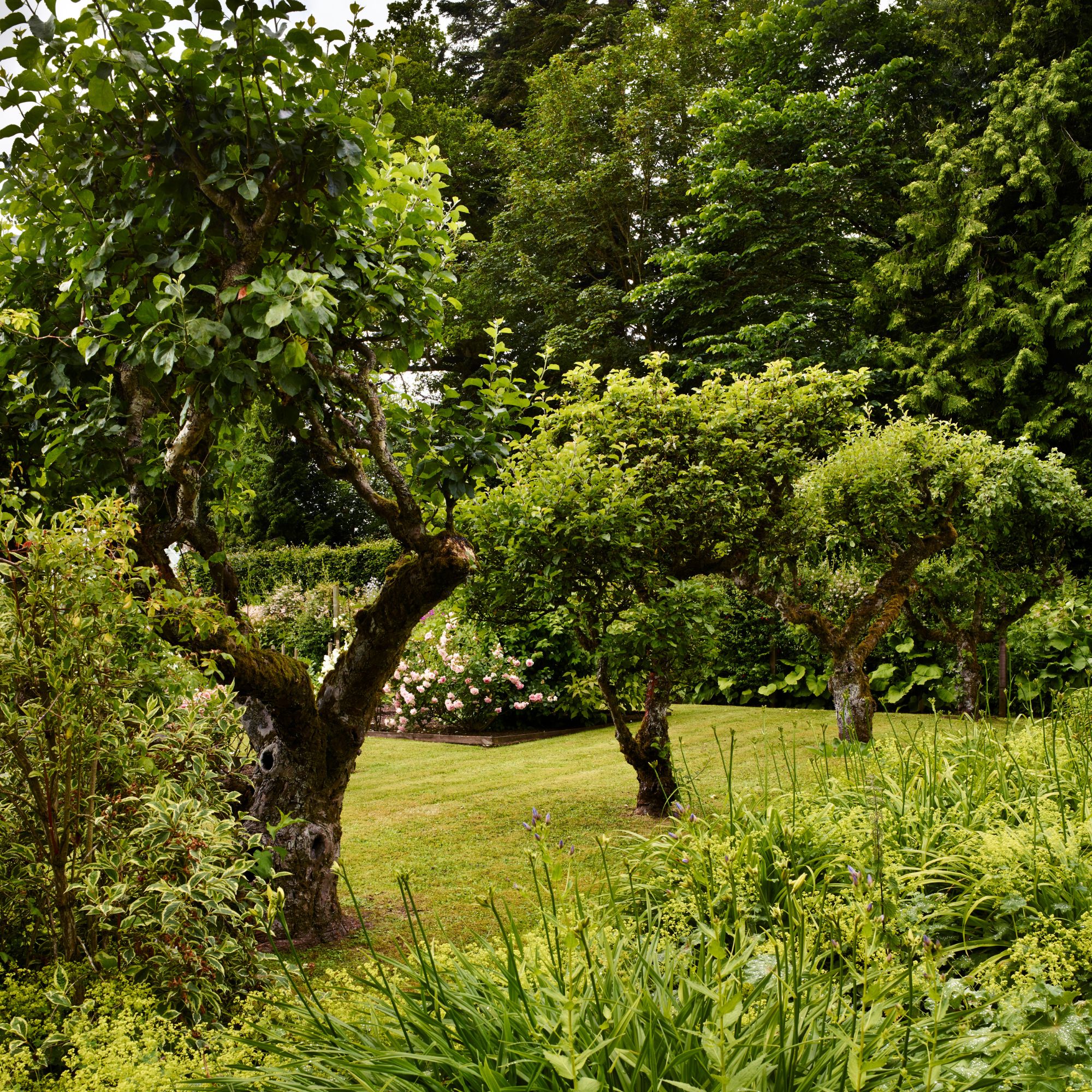
You will need
A telescopic pruner is ideal if you have a taller apple tree and are struggling to reach some branches.
A small hand-held pruner is essential when learning how to prune a pear tree. With these, you can get smaller water shoots, too.
Cleaning your tools is essential to prevent bacteria from damaging your pear tree. Wipes are a convenient option but bleach or sprays work well too.
Keep your hands safe (and warm during the winter weather) with heavy duty gardening gloves – a must when pruning
Designed to tackle most cutting jobs in the garden. Blade locks in open and closed position, folding close for storage and blade protection.
Safe to use on flat or slightly sloping ground, the rear leg of the ladder can be individually adjusted to accommodate slopes. Always make sure you have someone to assist you when using ladders.
1. Choose the right time
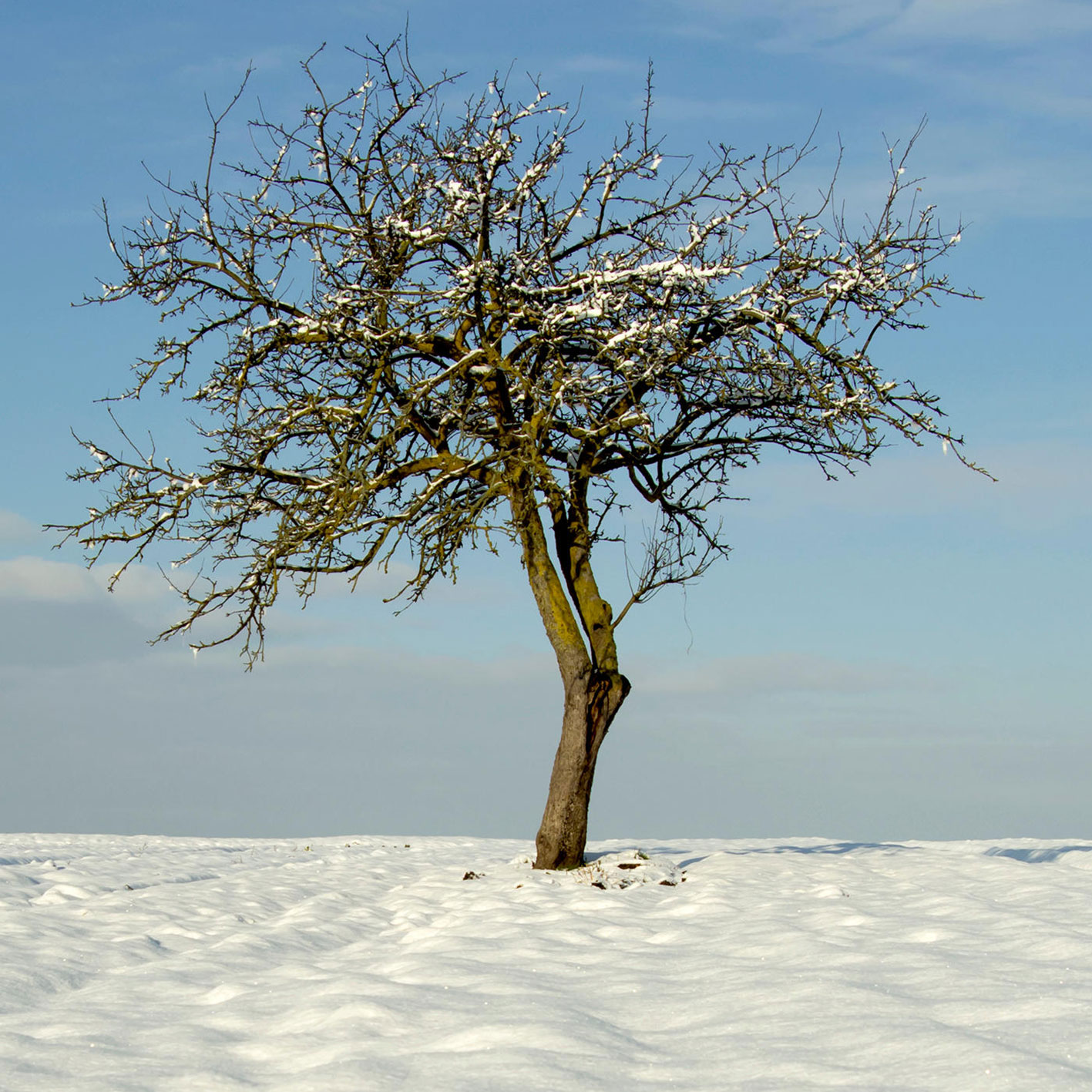
Like other fruit trees, pear trees are best pruned as one of the jobs to do in the garden in December – however, so long as the tree is pruned before spring, you shouldn't have any trouble.
If you've decided to plant a fruit tree in your garden, Julian Palphramand, head of plants at British Garden Centres advises that 'pruning should be carried out when the tree is dormant, between leaf fall and bud burst (usually between November and early March).'
'Pruning during this dormant season minimises stress on the tree allowing it to focus its energy toward healing and preparing for the upcoming growing season,' explains Petar Ivanov, Fantastic Gardeners' gardening and plant expert.
So long as the tree is in its dormant stage – with no signs of new growth – you're good to prune.
2. Remove dead or diseased branches
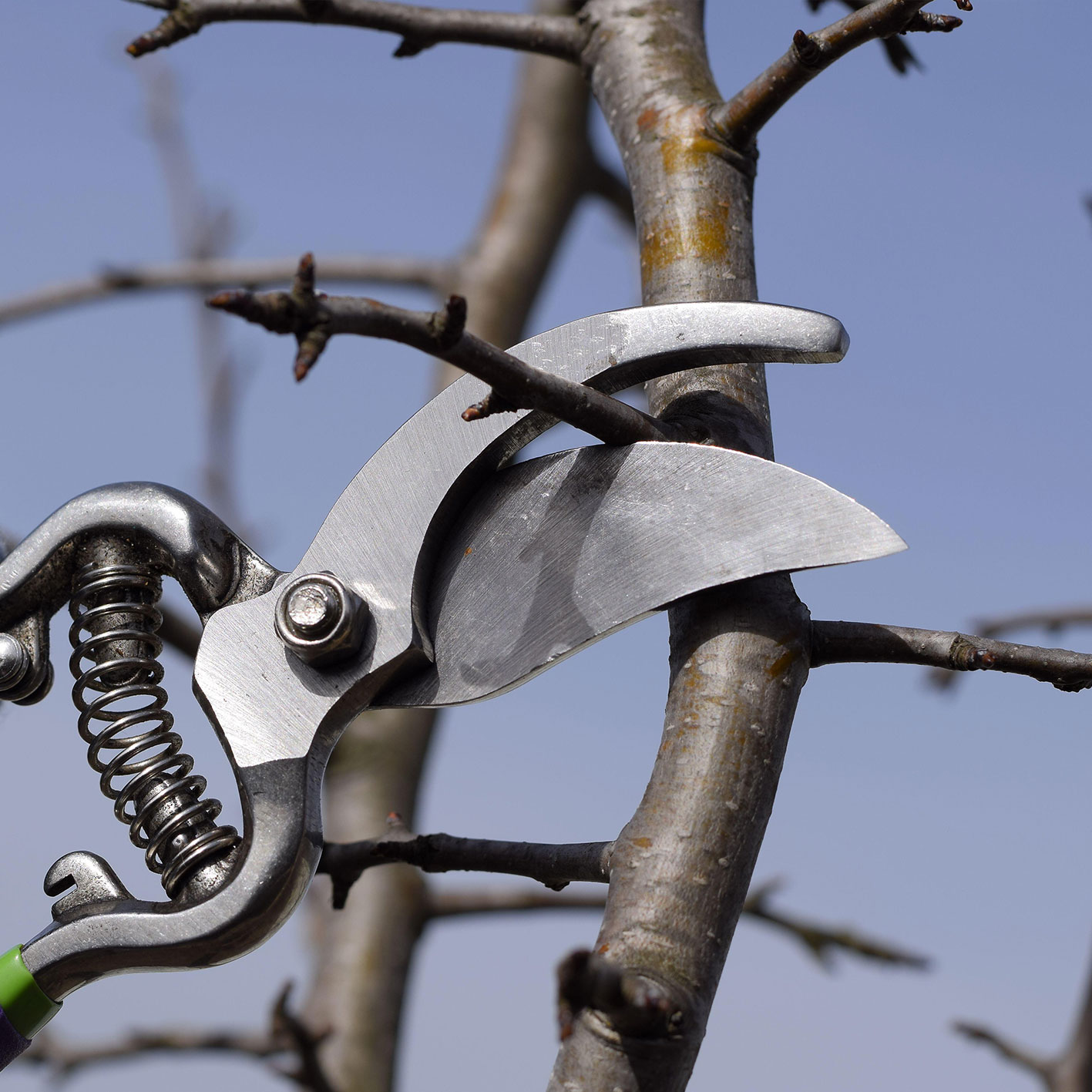
Just like how to prune an apple tree, the first step is to remove any dead, damaged or diseased branches. These will be easy to spot as they will look different from the rest of those on the tree. To remove use clean secateurs, loppers or, for really large branches, a saw.
All the tools you use for pruning must be clean and free of bacteria. To clean garden tools, simply use a disinfectant spray or wipe with rubbing alcohol or bleach. This will kill microbes on the blades and prevent you from introducing infection into your pear tree.
'Be mindful not to prune too vigorously, as removing too much can reduce fruit production, weaken the tree's structure, and cause slower recovery and delayed harvest. Over-pruning can increase the tree’s vulnerability to pests and diseases,' explains Steve Swanborough, gardening expert at Henchman.
3. Look for branches that cross
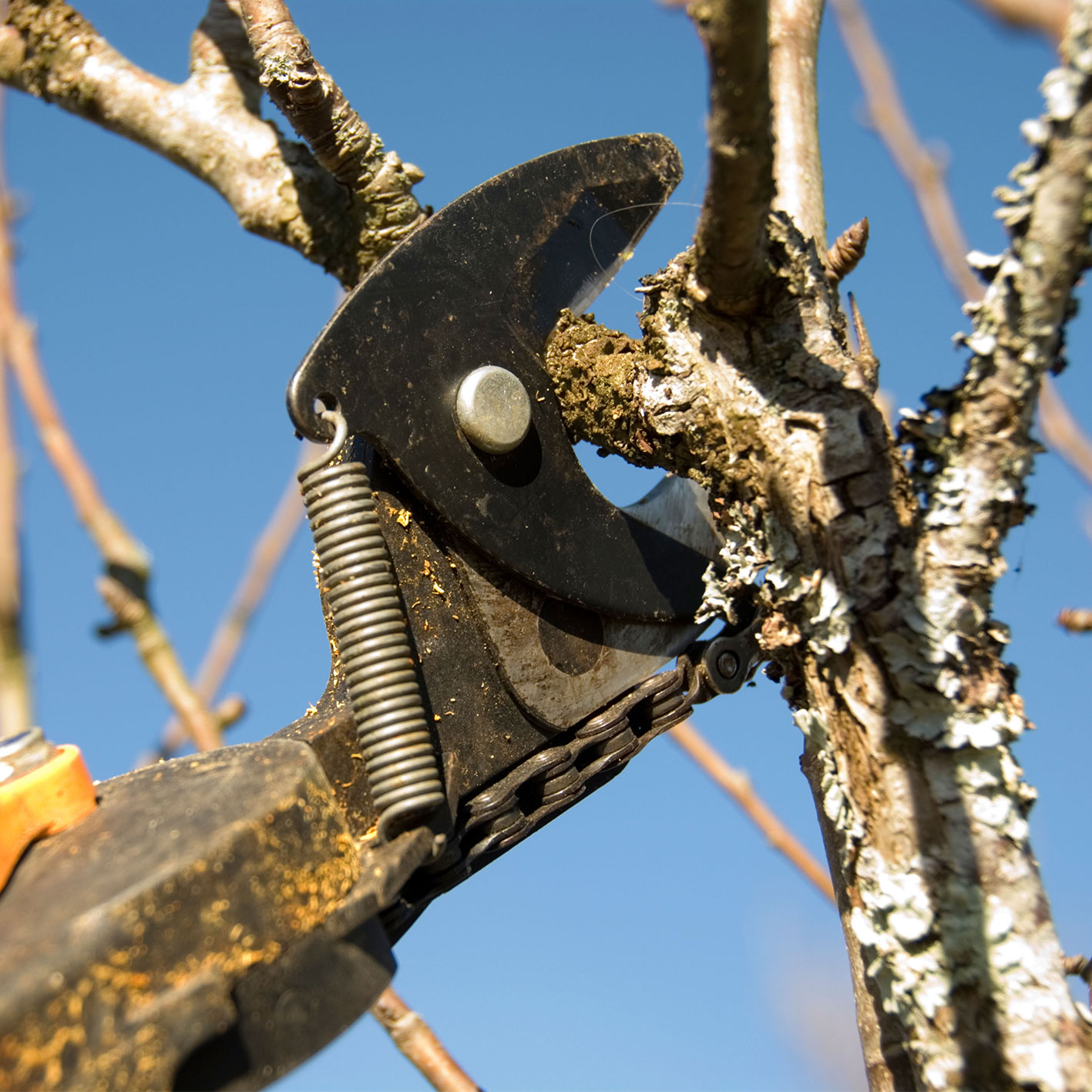
Crossing branches can rub together and cause sores – much like if you wear ill-fitting shoes. Just as with pruning roses, these sores often lead to more significant infections which could, ultimately, kill your tree. Remove one of the crossing branches to prevent sores from forming or allow existing ones to heal.
4. Reduce the height
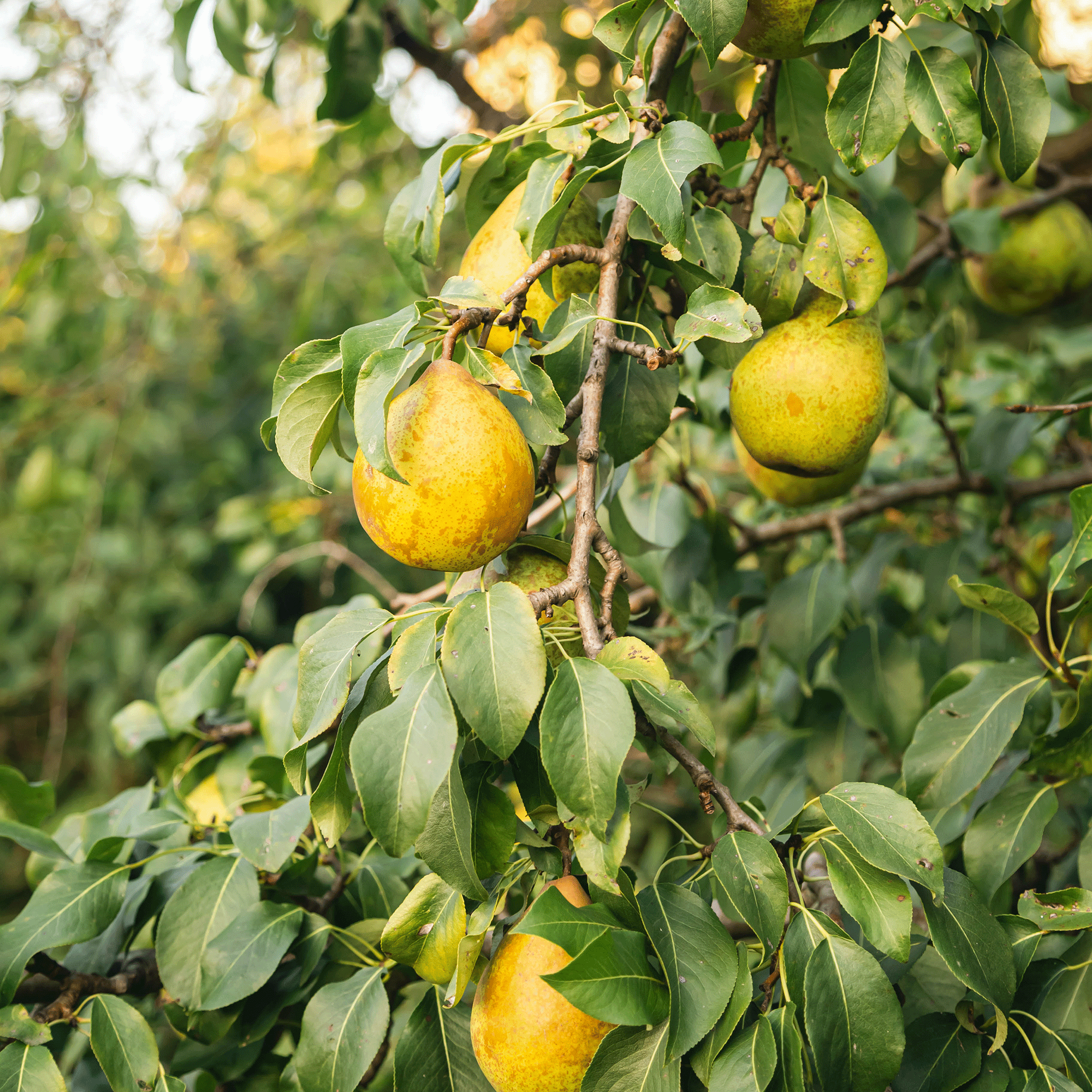
'Once your pear tree reaches its desired height, typically around 5-7 years, you can begin pruning to control its growth. Remove any dead, diseased, or crowded branches, and prune larger branches that are crossing each other. If branches are growing too long, trim them back by about a third,' says Glen Peskett from Saxton Blades.
'Always avoid cutting too much at once; removing 10-20% of the canopy in a single year is ideal as this will prevent the tree from producing excessive water shoots, which grow vigorously but do not produce fruit.'
It is important to remember that pear trees are one of the plants that you should never prune in autumn.
5. Trim last year’s shoots
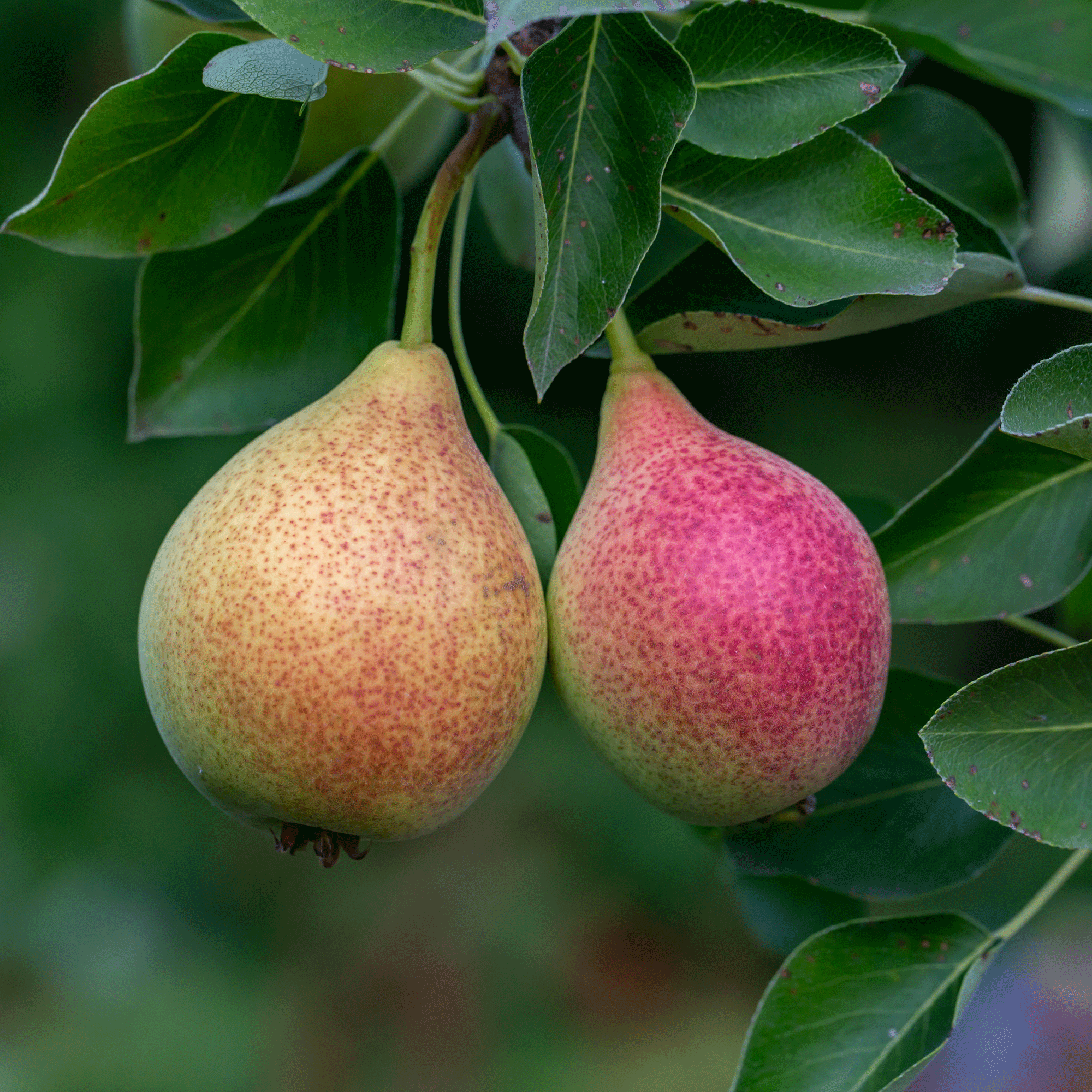
As pear trees carry their fruit on spurs close to the main branches, you can trim back last year's shoots.
'Pears carry their fruit on spurs close to the main branches, so leave about 12 branches when pruning,' explains garden expert Leigh Clapp. If you cut these branches you will have no fruit the following autumn.
6. Aftercare
Once you've learnt how to prune a pear tree, the next step is to feed and mulch.
'Remove any grass in an 18 inch circle around the tree so it’s not directly competing for nutrients and then feed with a handful of blood, fish and bone in spring, taking care not to sprinkle it on the trunk,' says Angela Slater, gardening expert at Hayes Garden World.
'After feeding in spring wait until after a downpour then mulch the tree with chipped bark, leaf mould, sheep wool or spent compost. If the weather is dry, give it a good water before mulching. Don’t put it up to the trunk as this just provides a habitat for potentially harmful insects.'
Burn any diseased material to stop the disease from spreading further. 'Chip other healthy material. Sprinkle the wood chip over the compost heap to make compost, periodically layering it with green material or just leave it in a pile to use as mulch,' adds Angela.
FAQs
How to prune a mature pear tree
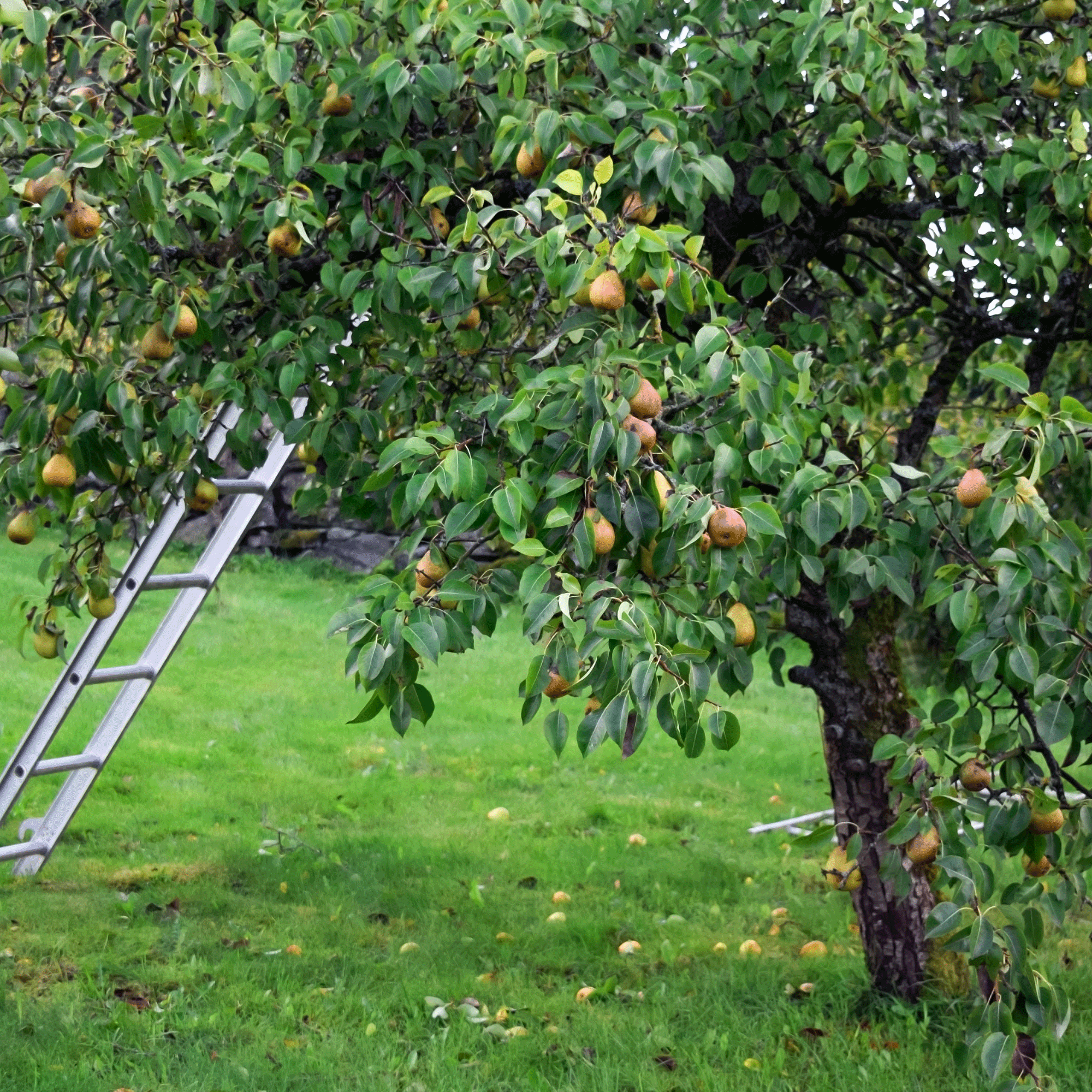
For mature pear tree, don't be tempted to over prune. 'Resist the urge to make large cuts, as these can be prone to decay. If you must cut a larger branch, look for a narrower section further from the trunk and make your cut there,' says Glen Peskett from Saxton Blades.
'It’s better to prune a little at a time over a few years, especially with older trees or trees that have been neglected. Over-pruning can stress the tree, leading to unwanted water shoots. The best wood for fruiting is typically between one and four years old, as it is more likely to produce good fruit. Older wood tends to be less productive, so it's important to focus on maintaining younger branches for better fruiting.'
'When making cuts, ensure they are clean and precise. Use sharp, pruning shears or a saw. Cut just above a bud at a 45-degree angle, sloping away from the bud to prevent water from pooling and causing rot,' adds Julian Palphramand, head of plants at British Garden Centres.
Where to buy pear trees
Local nurseries may stock more unusual varieties local to your area – these are more likely to thrive in your soil types and climate.
However, you can also buy pear trees online. If doing this, make sure you're purchasing from a reputable stockist who offer a guarantee that the plant will not be diseased and will arrive safely.
- You Garden has a wide range of varieties including 'Conference', 'Garden Pearl' and 'Little Red William'.
- B&Q stocks a duo fruit tree which has two different varieties – Concorde and Conference – on a single plant. Ideal for smaller gardens.
- Roots Plant offers guidance to help you find the best variety for your garden and soil.
When should pear trees be pruned?
Pear trees should be pruned in winter when the plant is dormant.
'As with most pruning of deciduous plants, it needs to be done in late winter to early spring before the temperatures rise and the buds start to break. Pruning when the weather is cold reduces the risk of the tree becoming infected with any destructive fungal diseases. Winter pruning also allows you to see the structure of the tree and easily remove any congested branches leaving an open pleasingly shaped tree,' says Angela Slater, gardening expert at Hayes Garden World.
What shape should a pear tree be?
A pear tree should be pruned to create an open goblet-like shape. 'The goal is to keep the tree’s open shape by keeping 5-10 main branches. Begin by trimming each of these branches by about one-third, cutting back to a healthy, outward-facing bud. This encourages new growth in the right direction and prevents overcrowding. Avoid pruning young side shoots, as they can bear fruit in their second year,' says Glen Peskett from Saxton Blades.







